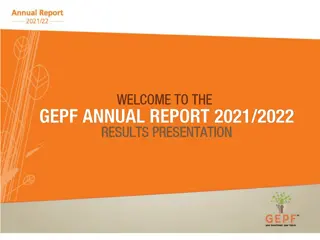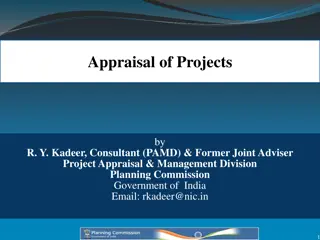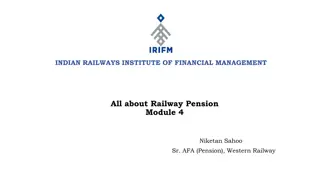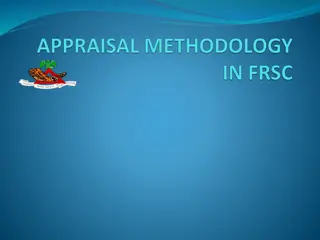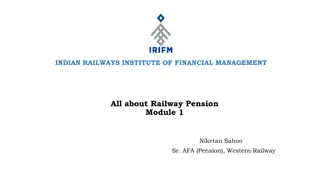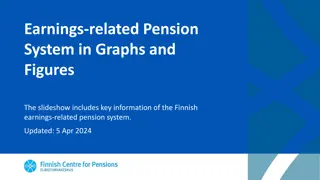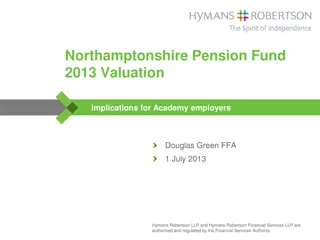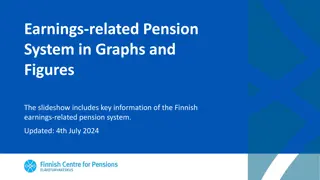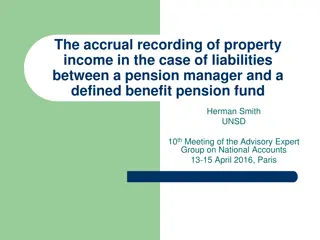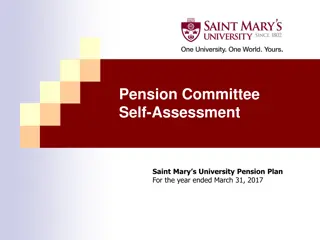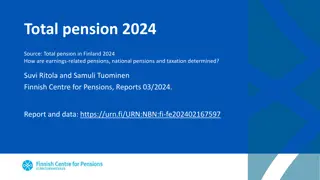Pension Fund Trustees' Responsibilities and Investment Appraisal
Pension fund trustees play a crucial role in appraising investment opportunities. They need to understand core investment concepts, ask key questions regarding investment rationale, returns, risks, fees, exit strategy, and valuation methodology. Knowing when to raise red flags is essential in safeguarding the fund's assets.
Download Presentation

Please find below an Image/Link to download the presentation.
The content on the website is provided AS IS for your information and personal use only. It may not be sold, licensed, or shared on other websites without obtaining consent from the author.If you encounter any issues during the download, it is possible that the publisher has removed the file from their server.
You are allowed to download the files provided on this website for personal or commercial use, subject to the condition that they are used lawfully. All files are the property of their respective owners.
The content on the website is provided AS IS for your information and personal use only. It may not be sold, licensed, or shared on other websites without obtaining consent from the author.
E N D
Presentation Transcript
Pension Fund Trustees Role and Responsibilities When Appraising an Investment Opportunity What a trustee needs to know, What questions they need to ask, What to look out for, and When to raise the red flag 26 June 2024 By Farai A. Gwaka (AIMZ) 1
Presentation Outline Presentation Outline Introduction What a Trustee Needs to Know Questions Trustees Should Ask What to look Out For When to Raise the Red Flag Conclusion 2
Introduction: Introduction: According to the New Pensions Act (2023) Trustees (Board members) have the following responsibilities: Overseeing Fund Management: The board has the ultimate authority for directing, controlling, and overseeing the daily operations of the fund. Fiduciary Duty: Board members hold a fiduciary duty, which means they must act in the best interests of the fund members and beneficiaries. This translates to ensuring the security and growth of the fund's assets. Investment Strategy: The board is responsible for developing and maintaining a robust Investment Policy Statement (IPS) that outlines the fund's investment goals, risk tolerance, and asset allocation strategy. Compliance: The board must ensure the fund complies with all relevant regulations set forth by the New Pensions Act and IPEC. Risk Management: Implementing effective risk management practices to safeguard the fund from financial losses is a crucial responsibility of the board. 3
What a Trustee Needs to Know: What a Trustee Needs to Know: Investment Fundamentals: Understanding core investment concepts like risk-return tradeoff, diversification, and asset allocation. Fiduciary Duty: Trustees have a legal obligation to act in the best interests of plan participants. This means prioritizing long-term returns and minimizing risk. Pension Documents: The pension fund's governing documents outline investment guidelines, risk tolerance levels, and prohibited investments. 4
Questions Trustees Should Ask: Questions Trustees Should Ask: Investment Thesis: What's the rationale behind the investment? How does it align with the fund's overall strategy and risk profile? Expected Returns and Risks: What are the projected returns and associated risks? Are these realistic and consistent with market benchmarks? Fees and Expenses: What fees and expenses are associated with the investment? How do they compare to similar options? Exit Strategy: How can the fund exit the investment if necessary? Are there any liquidity constraints? Valuation Methodology: How can this investment be valued fairly? How complex is the valuation or pricing of the asset? What valuation is used for Trustee reporting purposes? 5
What to Look Out For: What to Look Out For: High/Hidden Fees: Excessive fees can significantly erode long-term returns. Trustees should compare fees to industry benchmarks. Illiquid Assets: Investments with low liquidity can be difficult to sell when needed, potentially hindering the fund's ability to meet its obligations. Conflicts of Interest: Any potential conflicts of interest between the investment manager and the proposed opportunity should be thoroughly investigated. Unrealistic Projections: Overly optimistic projections of returns or downplaying of risks should raise red flags. Trustees should rely on independent analysis. 6
When to Raise the Red Flag: When to Raise the Red Flag: Lack of Transparency: If the investment manager is unwilling to provide clear and complete information, trustees should be wary. Unfamiliarity with the Asset Class: If the investment falls outside the fund's expertise or comfort zone, it might be best to decline. Unsatisfactory Risk Management: Insufficient risk management processes or failure to stress-test the investment should be cause for concern. Extreme Deviations from Benchmark Returns: Trustees should be cautious of extreme over or under performances to an investment s benchmark return. Gut Feeling: Sometimes, a red flag is simply a sense of unease. Trustees shouldn't ignore their instincts. 7
Conclusion: Conclusion: Seek Professional Help: Trustees can seek guidance from qualified investment professionals to assist in evaluating complex investment opportunities. Obtain multiple independent reviews of investment proposals for complex transactions. Document Everything: Maintain and follow an approved due diligence checklist, especially for alternative investments. Maintain a clear record of the appraisal process, including questions asked, responses received, and rationale behind decisions. Review Investments Regularly: Review investments made at least quarterly and undertake physical inspections where possible at least once of twice a year, depending on asset type and its location. 8
THANK YOU THANK YOU 9


